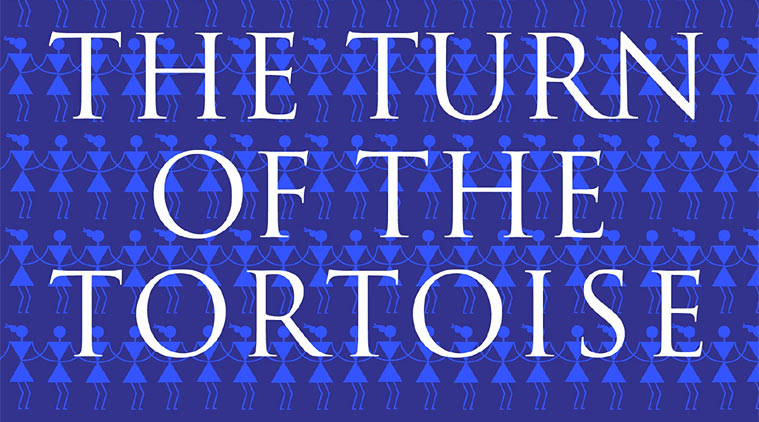Can the Tortoise Win the Race?
Ninan knows much from his daily observations about India’s frailties; in this book, he takes a panoramic view and suggests how some might be repaired.
 Every finance minister since then has begun his budget speech with a promise to do reforms, and left before he could do much harm.
Every finance minister since then has begun his budget speech with a promise to do reforms, and left before he could do much harm.
Book- The Turn of the Tortoise: The Challenge and Promise of India’s Future
Author: T N Ninan
Publisher: Penguin
Pages: 368
Price: Rs 699
Readers who like their newspapers to be serious have for years looked forward to reading TN Ninan’s Weekend Ruminations in the Business Standard — a measured dose of sanity in a medium full of momentary sensations. Now he has ventured into something more serious: a full-length book (about the tortoise whose turn has come, not about a tortoise about to take a turn). Ninan knows much from his daily observations about India’s frailties; in this book, he takes a panoramic view and suggests how some might be repaired.
An attempt was made a quarter of a century ago, when India faced its last and longest payments crisis. Narasimha Rao’s government dismantled controls and opened the economy slightly. Manmohan Singh brought me in from the wilderness to help with the reforms. Once the crisis was over, however, he lost urgency and regained caution; I left in frustration. Every finance minister since then has begun his budget speech with a promise to do reforms, and left before he could do much harm.
Irrespective of who governed, however, some good things have happened: the information technology boom in the Nineties, revival of manufacturing in the next decade, end of foodgrain insecurity more recently, and the rise of the Indian economy from the world’s 18th to the third-largest in purchasing power parity in the last quarter century. A circumspect prime minister with a lethargic cabinet has yielded place to an entrepreneurial prime minister with an immature cabinet. He has ambition, the future beckons; all that is lacking is knowledge of what to do next. If an ambitious policymaker is aware of his infirmities, he will find much in this book to educate him.
For instance, the prime minister’s invitation to international manufacturers to “make in India”. Ninan sums up why they will not: India’s labour laws are a handicap, its workers are not productive, infrastructure is deficient and dealing with authorities is a nightmare. Policy and polity occupy a large space in what Ninan thinks is wrong with India; he illustrates it in detail, and sometimes suggests solutions — not enough of them, for having watched it at close quarters for decades, he does not have much hope of Indian democracy. But he is more realistic than pessimistic: he thinks India will “settle for secularism with Hindutva characteristics, even as politics settles into a more clearly middle-class mould in the coming decade.”
As befits an editor, Ninan has good stories — for instance how, when Yashwant Sinha went to Tokyo in 1990 as finance minister of a bankrupt India looking for more loans, Ryutaro Hashimoto, the Japanese finance minister, shook his hand and rushed out, telling him to talk to Hashimoto’s bureaucrats. Ninan thinks such an insult would be unthinkable now; instead, many countries are looking for India to help them balance the rise of China. That, in his view, is unrealistic: the best India can do is to grow its economy as rapidly as possible.
But even growth has its perils. Ninan notes that every country that grows rapidly thinks of introducing bullet trains and hosting Olympics. The break point is a per capita income of $6000 in 1990 dollars. India was at $3372 in 2009-10, so it might soon start dreaming expensively. But it is already fulfilling less expensive dreams — producing literature, art and films, for example. Ninan sees hope in three trends. First, many markets are large, and many more will get larger, creating conditions for efficient growth. Second, private enterprise will replace the lackadaisical government in one sector after another, starting with education and health.
Finally, power will shift from the centre to the states, which implement policies anyway. Ninan notes the recent illiberal political tendencies, but ends up with hope: the system has stability, and life will get better for most.
Ninan has no illusions about the poverty industry: the food distribution system saw enormous corruption and leakages, while a third of the cost of the employment programme was so-called administration costs. Still, poverty came down because of the high growth in the UPA period. He thinks that corruption could be reduced by changing over to cash transfers, but doubts that the NDA government would have the courage to make the change. He details the big corruption scandals under the UPA, and notes that no one gives a thought to rampant petty corruption.
Despite his voluminous evidence, he ends up as a cautious optimist, saying we may not be even near the end of the beginning of the fight against corruption, but are probably at the end of inaction.
Ninan has been a perceptive observer of the Indian political landscape for over three decades; he also reads much outside his chosen field of journalism. He has finally written a highly readable book encapsulating his wisdom. I hope he will write another one — more replete with good gossip.
Ashok V Desai is an extinguished economist and aspiring wordsmith




- 01
- 02
- 03
- 04
- 05























